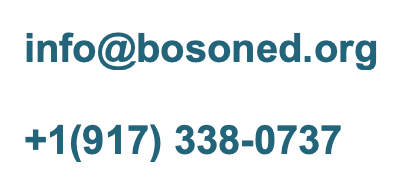Financial Aid Friendly Colleges
I will first introduce schools that are generally generous with financial aid, followed by those that are more accessible—schools that are relatively easier to get into and also offer good financial support.
First is Yale University. The average grant or scholarship amount is $63,520, and as we discussed previously, grants and scholarships do not need to be repaid. About 52% of students receive them. The average out-of-pocket cost is $18,650. Yale promises to meet 100% of students' demonstrated financial need, and does so without requiring student loans. This includes both need-based and non-need-based aid. Yale waives all costs for families with annual incomes below $75,000. For families earning between $75,000 and $200,000, the required contribution ranges from 1% to 20% of their income.
Second is Dartmouth College. The average grant or scholarship amount is $62,290, with 45% of students receiving aid. The average out-of-pocket cost is $19,210. Dartmouth waives all tuition for families earning less than $125,000 and provides loan-free financial aid packages, meaning all aid is in the form of grants or scholarships that don’t require repayment.
Third is Harvard University. The average grant or scholarship amount is $61,800, with 56% of students receiving aid. The average out-of-pocket cost is $19,490. Harvard covers all costs for families earning less than $85,000. Families with incomes between $85,000 and $150,000 typically contribute no more than 10% of their annual income.
Fourth is Northwestern University. The average grant or scholarship amount is $61,720, with about half of students receiving aid. The average out-of-pocket cost is $22,100. At Northwestern, around 60% of undergraduates receive financial aid. Among families earning less than $120,000 annually, 97% receive assistance.
Next is Wellesley College. The average grant or scholarship amount is $61,330, with 59% of students receiving aid. The average out-of-pocket cost is $21,360. Wellesley eliminates student loans for families earning under $100,000 and caps the total family contribution at $28,000. For other students with financial need, aid packages may include loans, but the loan amount is limited to $3,000 in the first year, with a four-year total cap of $15,200.
Sixth is Columbia University. The average grant or scholarship amount is $61,060, with 52% of students receiving aid. The average out-of-pocket cost is $22,060. Columbia waives all costs for students from families earning less than $66,000.
Seventh is Stanford University. The average grant or scholarship amount is $60,620, with 53% of students receiving aid. The average out-of-pocket cost is $18,280. Stanford uses a need-based assessment model for financial aid, similar to need-aware, focusing resources on those who need it most. For the class of 2026, students receiving aid were awarded over $68,000 in scholarships on average. Families earning under $225,000—more than 95% of them—receive aid. Families earning less than $75,000 receive over $86,000 in scholarships and grants on average.
Though these schools are generous, they are also highly competitive in admissions. Are there generous schools that are less difficult to get into? The answer is Yes.
Washington University in St. Louis is a private university ranked 21st nationally, located in St. Louis, Missouri. While admission is still competitive, it's somewhat more accessible than the schools above. The average grant or scholarship is $58,190, with 43% of students receiving aid. The average out-of-pocket cost is $23,430.
Colby College is a liberal arts college in Maine, ranked 25th nationally. The average grant or scholarship is $61,720, with 41% of students receiving aid. Colby waives tuition for students from families earning less than $75,000. For families earning less than $150,000, the annual parent contribution is capped at $15,000. Colby uses a need-aware admission policy, meaning financial need is considered in admissions decisions. Still, 95% of families earning up to $200,000 qualify for aid, and nearly half of all incoming students receive some form of financial assistance.
Haverford College
is a liberal arts college located in the suburbs of Philadelphia, ranked 24th nationally. The average grant or scholarship is $58,000, with 45% of students receiving aid. The average out-of-pocket cost is $23,480.
Berea College,
ranked 40th nationally, is unique in several ways. Since 1892, it has not charged students any tuition. Currently, the total fee is only $726, covering both tuition and fees. Compared to the national average tuition of $51,147, Berea's cost is almost negligible.
Colgate University, which may sound like a made-up school due to its similarity to the toothpaste brand, is actually a top-ranked liberal arts college, ranked 22nd nationally. The university is indeed connected to the Colgate family—William Colgate, the founder of the Colgate company, helped establish the school. Located in Hamilton, New York, Colgate offers an average grant or scholarship of $54,650 to 41% of students. The average out-of-pocket cost is $27,070.
A few final suggestions:
- Although public universities often have lower tuition, they tend to offer fewer scholarships. Don’t be intimidated by their high sticker prices. All the schools we’ve covered today are private institutions. Private colleges often provide very generous aid, and most students receive some financial support.
- A high-ranking school is not necessarily more generous.
- Choose between need-blind and need-aware schools based on your actual financial situation.

















